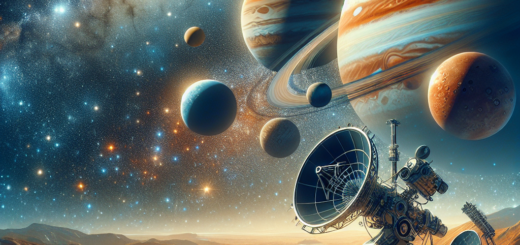The Fascinating Diversity of Planets in Our Galaxy
The galaxy is a vast and mysterious place, filled with billions of stars and planets. Among these celestial bodies, planets hold a special fascination for scientists and astronomers. From the rocky, barren landscapes of Mercury to the gas giants like Jupiter and Saturn, each planet in our galaxy offers a unique and intriguing glimpse into the wonders of the universe.
One of the most fascinating aspects of planets in our galaxy is their sheer diversity. While some planets may resemble Earth in terms of size, composition, and atmosphere, others are vastly different in almost every way imaginable. For example, Mercury is the smallest planet in our solar system and is known for its extreme temperatures, ranging from scorching hot to freezing cold. Venus, on the other hand, has a thick atmosphere that traps heat, making it the hottest planet in our solar system.
Moving further out from the sun, we encounter the rocky, barren landscapes of Mars, which has intrigued scientists for centuries with its potential for hosting life. Beyond Mars, the gas giants like Jupiter and Saturn dominate the outer reaches of our solar system, with their massive sizes and swirling storms that stretch for thousands of kilometers.
But the diversity of planets in our galaxy doesn’t end there. In recent years, astronomers have discovered exoplanets – planets that orbit stars outside of our solar system. These exoplanets come in all shapes and sizes, with some being similar to Earth in terms of size and composition, while others are entirely unlike anything we have ever seen before.
One such example is Kepler-186f, an exoplanet located in the habitable zone of its star, making it a potential candidate for hosting life. Another fascinating exoplanet is K2-18b, which has been dubbed a “super-Earth” due to its larger size and potential for hosting liquid water on its surface.
The discovery of these diverse planets in our galaxy has opened up new avenues of research and exploration for scientists and astronomers. By studying the atmospheres, compositions, and orbits of these planets, we can learn more about the formation and evolution of planets in our galaxy, as well as the potential for life beyond Earth.
In conclusion, the fascinating diversity of planets in our galaxy is a testament to the complexity and beauty of the universe. From the rocky, barren landscapes of Mercury to the gas giants like Jupiter and the potential for habitable exoplanets, each planet offers a unique and intriguing glimpse into the wonders of the cosmos. As we continue to explore and study these celestial bodies, we can only imagine what other secrets and wonders await us in the vast reaches of our galaxy.













